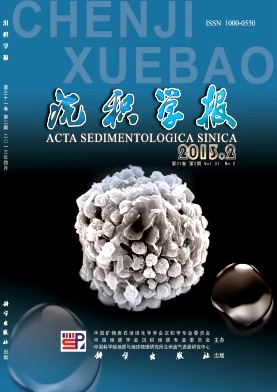Early Diagenesis of Late Pleistocene Aeolian Carbonate Sediment on Shidao Island, Xisha Islands
- Publish Date: 2013-04-10
-
Key words:
- Shidao Island /
- aeolian carbonate sediment /
- early diagenesis /
- meteoric diagenesis
Abstract: The surface sediments on Shi Island of Xisha Islands are aeolian sediments, which have been formed during late Pleistocene, and they are undergoing early diagenesis. Through the detailed observation of outcrops, sections and SEM, combing with the analysis of stable isotope of carbon and oxygen, major elements and trace elements, we found the aeolian seddiments had been consolidated mainly in meteoric diagenetic environment, and the evaporation diagenesis might play an important role during the early consolidation of the aeolian sediments. Under the influence of meteoric diagenesis, part of clasts have been leached and experienced neomorphism. And the newly producted microspar low magnesium calcite (410 m) cements usually pectinally inlayed on the surface of grains or pores in form of graininess, and became main cements. However, the content of calcsparite cements, which usually taken as the marker products of vadose and phreatic diagenesis, were generally less than the microspar cements in the most of rocks. The sea water mainly influenced and altered the former meteoric diagenesis, could raise the content of Sr and Mg, while only the surface of aeolianite had been affected. And the sea water diagenesis had a little influence about the δ13C and δ18O of the aeolian carbonatite. However, the formation of calcrete and rhizoliths, which were mainly developed in the paleosols, might have been affected by biochemical process. But the biochemical process had little sense for the whole diagenesis of the aeolian sediments. The meteoric diagenesis could decline the δ13C and δ18O of the aeolian sediments, and leach the Sr2+ and Mg2+ by the neomorphism. For the pedogenesis, the palaeosols are relative abundant in Al (aluminium), Fe (ferrum), Mn (manganese), Y (yttrium) and Cr (chromium) than the aeolian calcarenite. Nevertheless, the concentration of Y (yttrium) and Cr (chromium) showed little relationship with pedogenesis, and we induced that they might come from travel fatigue or volcanic ash during the relatively long term exposure.
| Citation: | Early Diagenesis of Late Pleistocene Aeolian Carbonate Sediment on Shidao Island, Xisha Islands[J]. Acta Sedimentologica Sinica, 2013, 31(2): 220-236. |






 DownLoad:
DownLoad: